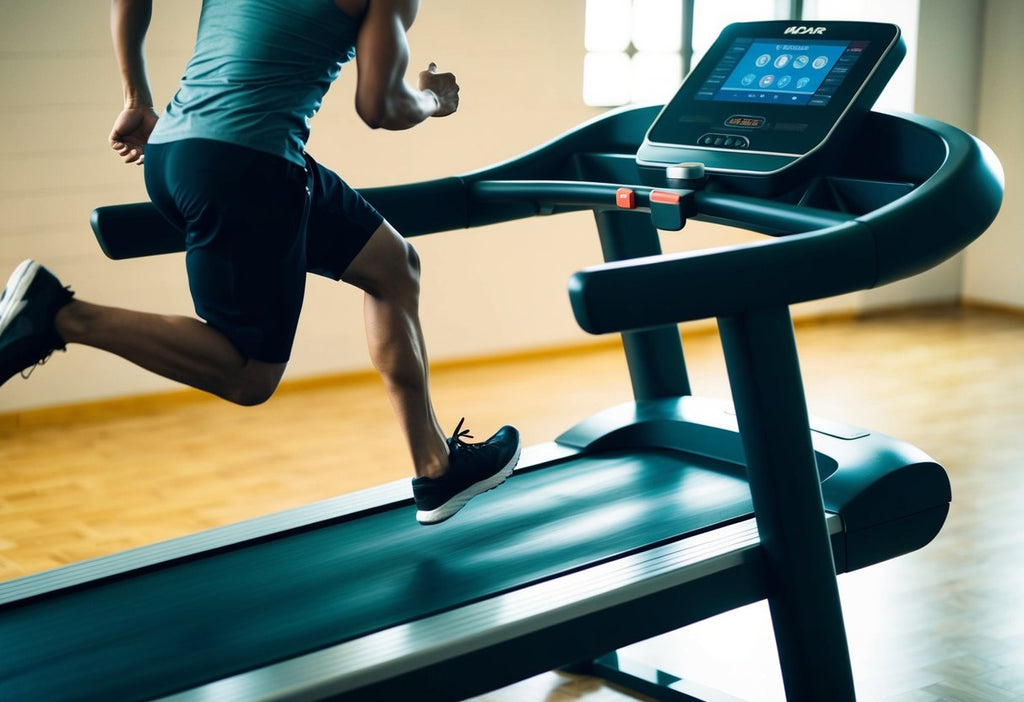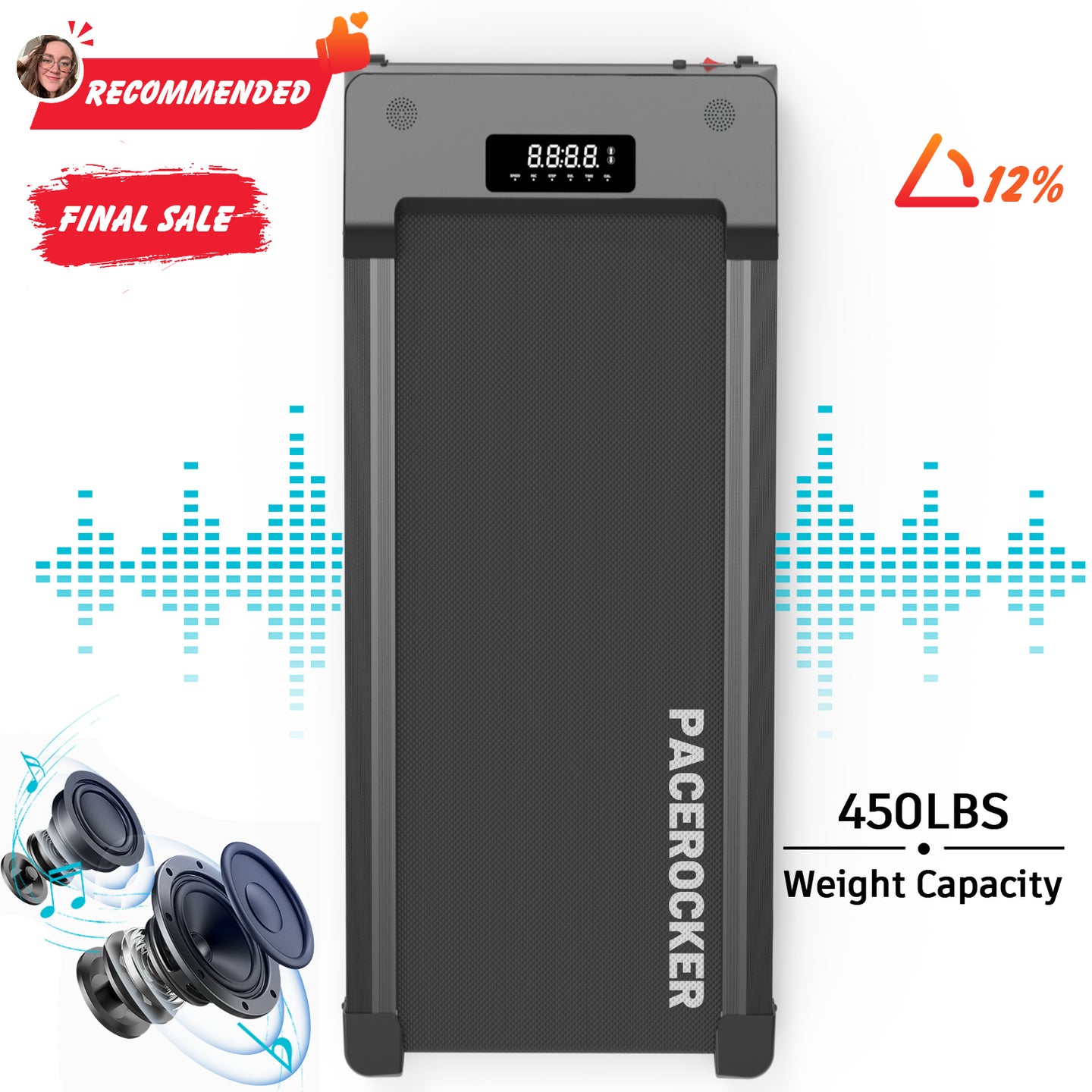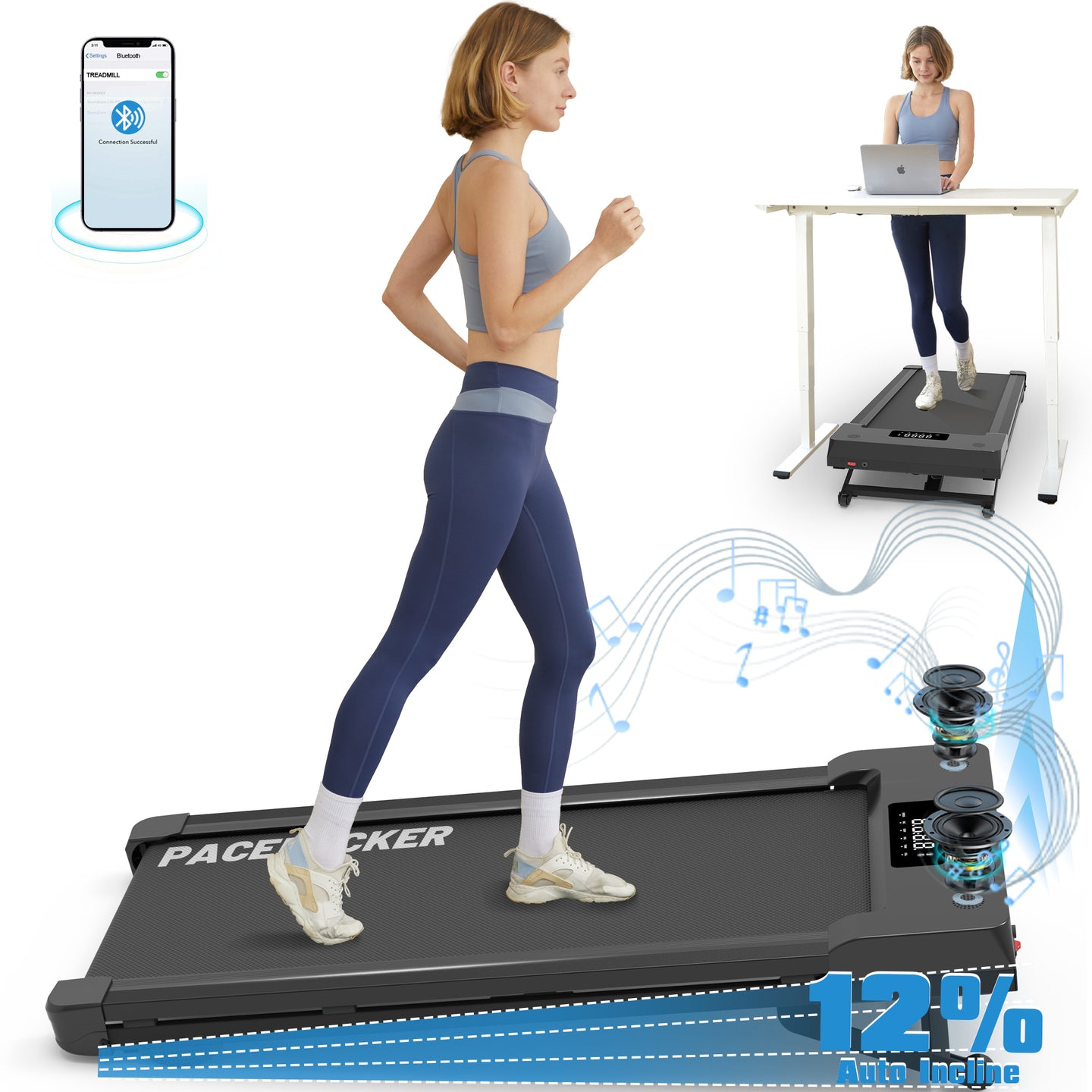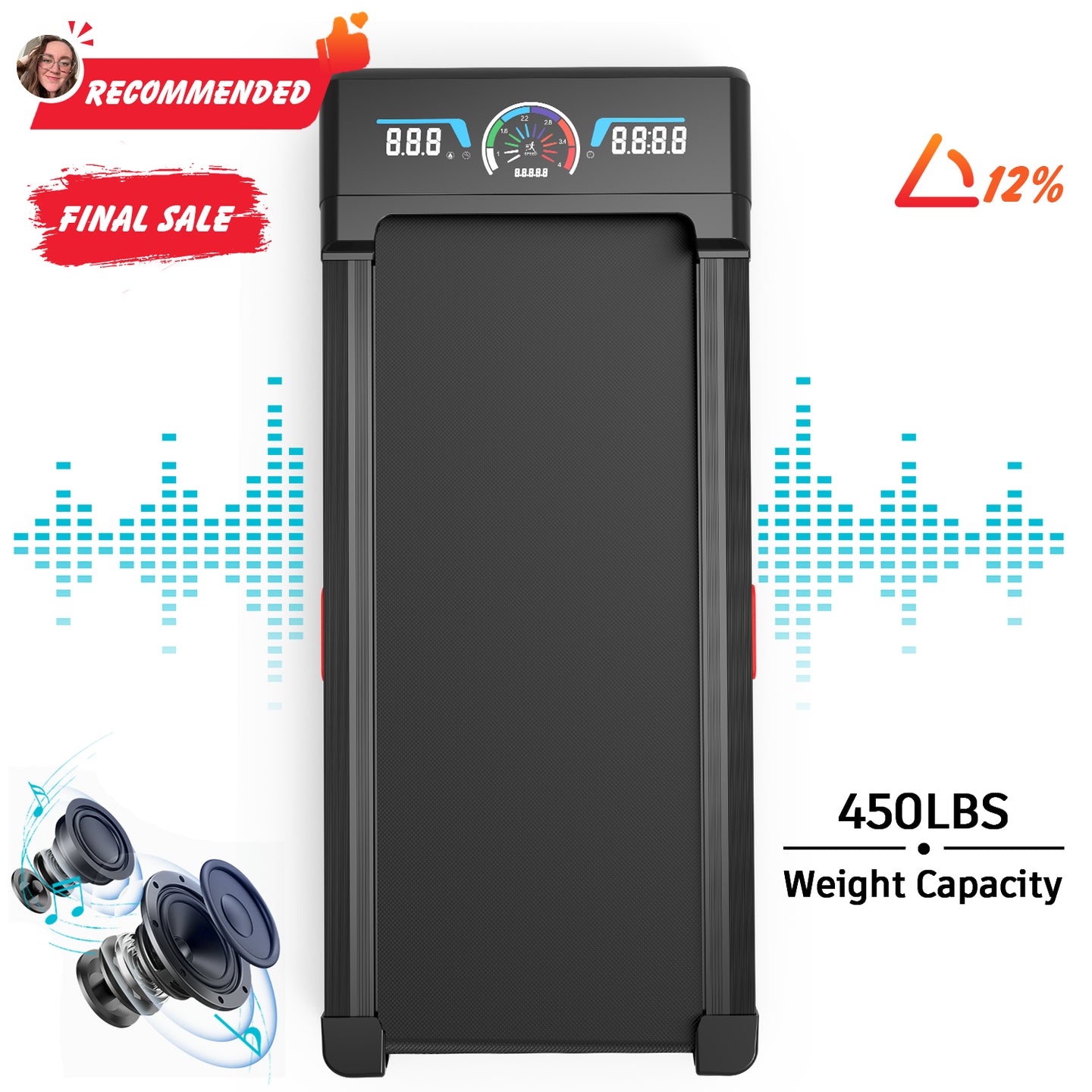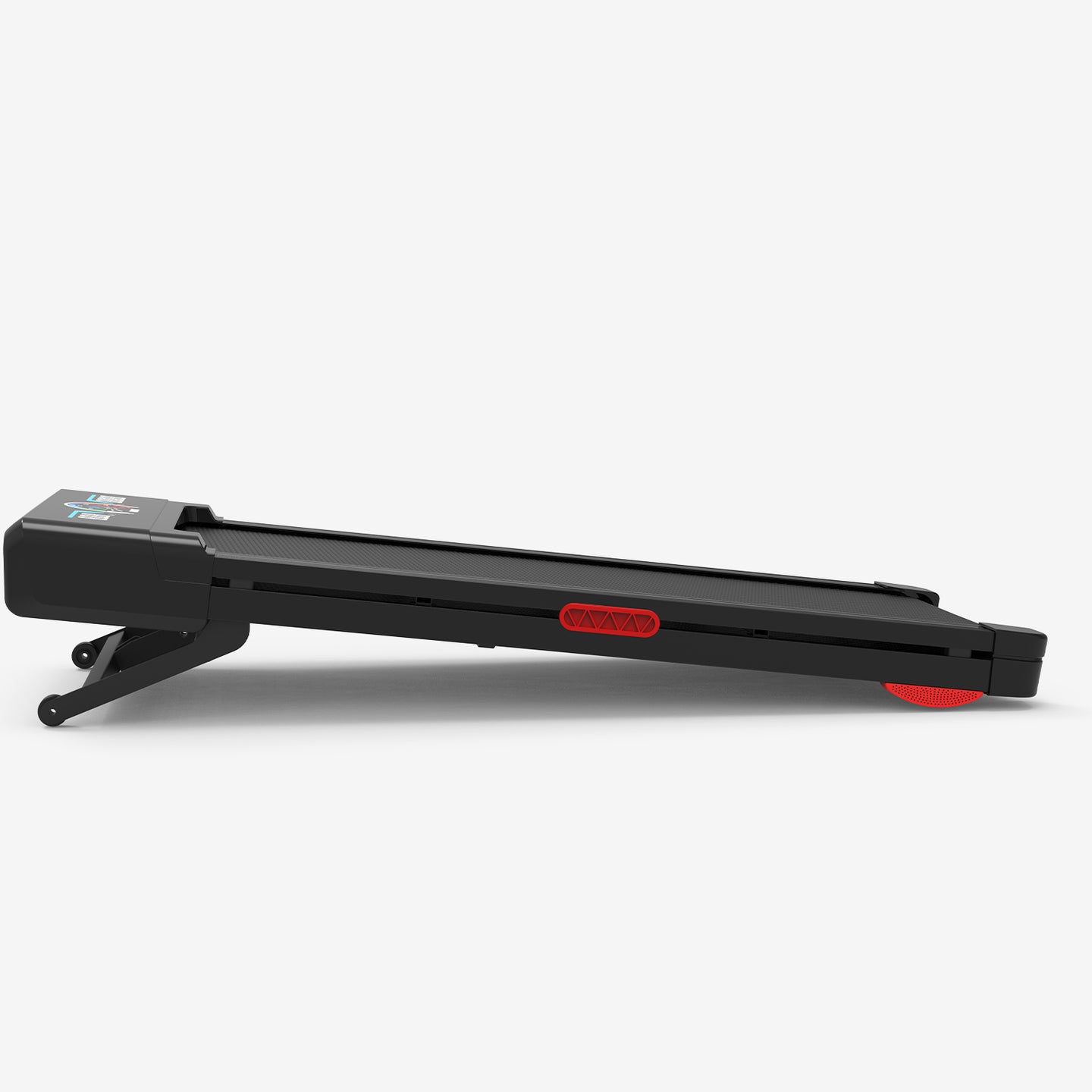How to Hide a Treadmill
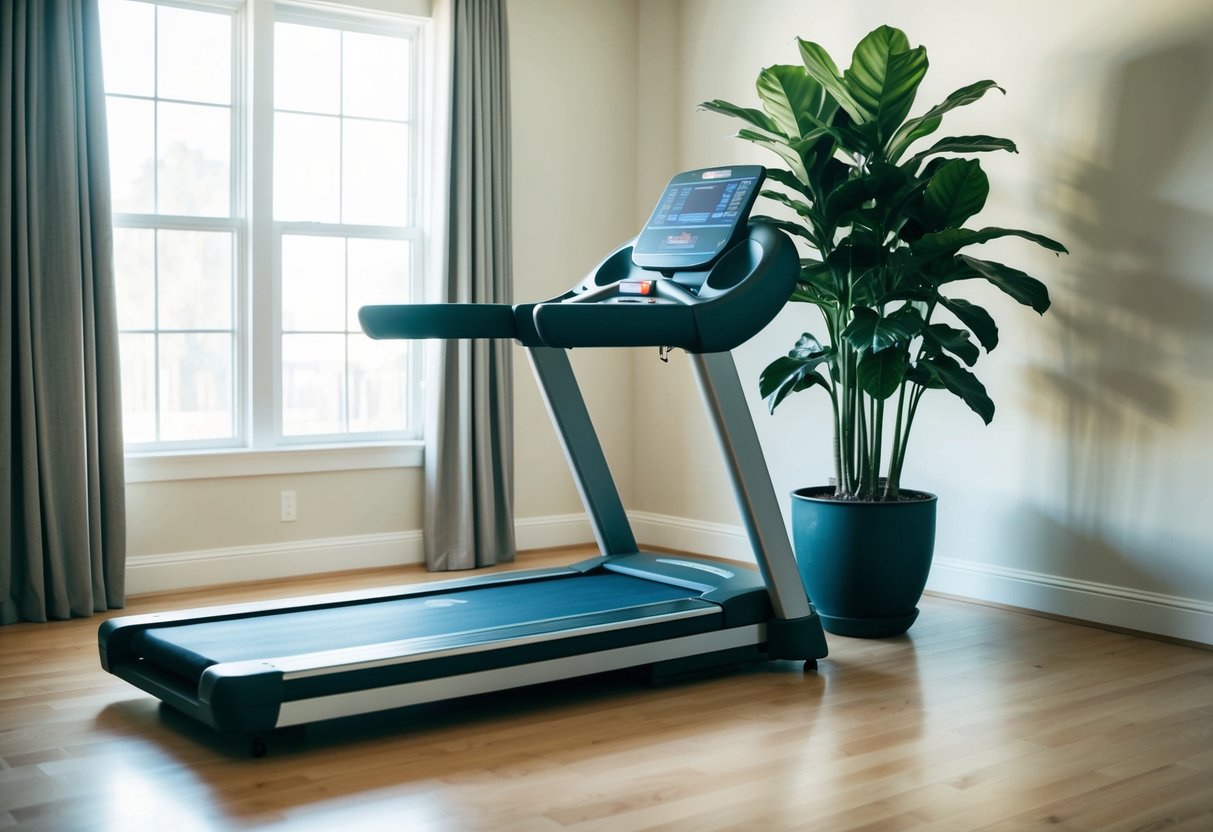
How to Hide a Treadmill
Don’t forget to check out our Pacerocker, Trailviber, and Trailviber Auto Incline walking pad treadmills.
In today's fitness-conscious world, many of us are figuring out how to incorporate exercise equipment seamlessly into our homes.
A treadmill is a fantastic way to stay active indoors, but its bulky presence can be a challenge for enthusiasts who love a clean and organized space.
To successfully hide a treadmill, we must focus on space-savvy solutions and stylish design choices that transform this piece of equipment into an unobtrusive element of home decor.
We need to assess our available space carefully. Whether it's a multipurpose room or a corner in the living area, selecting the right treadmill model can make a significant difference.
Low-profile, foldable designs are perfect for discrete storage. Creative solutions, like integrating the treadmill with furniture or using decorative panels, offer practical ways to keep it out of sight while maintaining room aesthetics.
Choosing a treadmill that fits our lifestyle without compromising our home's beauty is crucial. By prioritizing function and aesthetics, we avoid clutter—a byproduct of an otherwise healthy lifestyle.
Let's explore how we can maintain both an active routine and an inviting home environment with thoughtful planning.
Key Takeaways
-
Creative design helps hide treadmills elegantly.
-
Select space-saving treadmill models.
-
Balance function with visual aesthetics.
Assessing Your Space
To successfully hide a treadmill, it's crucial to evaluate our available space. We need to consider both where the treadmill will fit and how much room it requires when in use and when stored.
Identifying Ideal Locations
Choosing the right location is essential for both accessibility and concealability. Let's consider areas that aren't frequently used. Spaces like the basement, attic, or a large closet can work well.
If we're working with a living area, behind a sofa or under a raised bed can be good options.
Evaluating the traffic patterns in our home will help us avoid placing the treadmill in areas where it could become an obstacle. We should also think about ventilation and electrical outlets to ensure the treadmill operates efficiently and safely.
Taking Measurements
Accurate measurements are key to fitting the treadmill into our chosen spot.
We should measure the length, width, and height of the treadmill, both when it’s folded (if applicable) and when fully extended.
After we’ve gathered these dimensions, we should measure the intended space to verify a proper fit, considering both storage and workout positions.
Ensuring there’s enough clearance space around the treadmill is necessary for an effective and safe workout. A simple list can help:
-
Treadmill dimensions: folded and extended
-
Available space dimensions
-
Clearance around the treadmill: allow for safe movement
Design Solutions
Our aim is to explore creative ways to integrate a treadmill into a living space without sacrificing style or functionality. Let's look into options like blending it with existing furniture, using partitions, and employing covers that complement your home decor.
Furniture Integration
Incorporating a treadmill with furniture can be highly effective. Consider a custom-built cabinet that houses the treadmill, neatly closing when the machine is not in use. This keeps the room looking tidy while ensuring easy access.
Modular furniture might also serve our needs. Look for multi-functional pieces like a shelving unit with space for a folded treadmill or a sofa that opens to reveal equipment storage. These designs make a treadmill both discreet and accessible.
Room Dividers and Partitions
Utilizing room dividers or partitions can help in sectioning off a part of a room for the treadmill. This option works well in larger spaces or open-plan areas. Folding screens, for example, offer a flexible solution. They can be easily moved and work as a stylish backdrop.
Bookshelves or curtains on rails can also create a semi-permanent division. These options not only hide the treadmill but also provide extra storage or design opportunities. We can pick materials and colors that enhance the overall aesthetic of the room.
Decorative Covers
Decorative covers can turn a treadmill into a stylish feature rather than an eyesore.
Opt for tailored covers made from durable fabric that match the room’s color scheme. Patterns or textures can add an extra design element, making the cover part of the room’s style.
Another approach is using a custom-made slipcover, which can coordinate with other textiles in the room, like curtains or throw pillows. This ensures the treadmill blends seamlessly into the home environment while being protected from dust or damage.
Creative Concealment
In our quest to maintain a chic home environment while promoting a healthy lifestyle, we have devised numerous inventive ways to disguise fitness equipment. Whether through custom cabinetry, clever DIY hacks, or making the most of vertical space, we're exploring how to seamlessly integrate a treadmill into our living areas.
Custom Cabinetry
Custom cabinetry offers an elegant solution. By designing a built-in unit, we can blend the treadmill into existing decor. We might consider cabinets with retractable doors that open when we need to use the treadmill and close to hide it away.
We can use materials and finishes that match our home’s interior design. This not only disguises the machine, it adds a functional storage area for workout gear.
Additionally, incorporating ventilation features ensures our treadmill stays in good condition. Proper airflow keeps it cool and extends its lifespan. Crafting a custom look requires some planning, but it beautifully integrates the treadmill into homes.
DIY Hacks
Creative DIY hacks provide us with budget-friendly options. By repurposing furniture like wardrobes or bookshelves, we create innovative hiding spots for treadmills.
We can remove the back of a wardrobe for easy treadmill access or adjust shelving for a snug fit.
Using self-adhesive wallpaper or paint, we can match the piece to our home's design. Hinged panels are another smart trick, acting as walls that open when needed.
For those with a crafty side, including personal touches like mural art or decals adds a unique flair. It becomes a project that reflects our style while offering workout equipment privacy.
Utilizing Vertical Space
When floor space is tight, we benefit from using vertical space.
Mounting our treadmill on the wall with a fold-up mechanism is practical and space-saving. We could also consider elevation platforms that raise the treadmill when not in use, combining storage with functionality.
Installing shelves above or around our treadmill helps utilize space effectively. Placing workout accessories, decorative plants, or books in these areas adds to the room’s ambiance.
We should focus on stability and security to ensure safety and ease of use. Vertical solutions maximize our living area, merging exercise routines with stylish home design.
Treadmill Selection Tips
Choosing the right treadmill is vital for efficient use of space and maintaining our fitness goals. Focus on features like foldability and compact size to make it easy to store without sacrificing functionality.
Foldable Models
Foldable treadmills are perfect for those looking to save room. Key factors to consider include the ease of folding and unfolding. Look for models with hydraulic systems that simplify this process, making it less of a workout in itself.
We should also ensure stability remains uncompromised when folded. Note the weight of the treadmill, as lighter models are often easier to maneuver.
Keep in mind that while these models offer space-saving benefits, they're just as robust for various workout intensities.
Compact Designs
Compact treadmills are a fit for tight spaces. Their slim frames allow integration into urban apartments or home gyms without crowding. They usually have shorter tracks, which are suitable for walking or light jogging rather than full sprints.
When considering compact designs, check the motor power. A good motor can sustain consistent workouts without overheating.
Another useful feature is having quiet operation, reducing noise in shared spaces and enabling late-night or early-morning sessions without disturbing others.
Maintenance and Mobility
Keeping our treadmill in top shape and easily moving it around our space are essential for a seamless workout experience. Let's focus on how to maintain its performance and choose models with convenient mobility features.
Regular Treadmill Care
To ensure our treadmill remains in excellent condition, regular maintenance is key.
Start by wiping down the machine after each use to prevent sweat buildup. We should also inspect the belt and deck for any signs of wear or misalignment.
It's crucial to lubricate the belt periodically, as recommended by the manufacturer, to reduce friction and extend its lifespan.
Vacuuming the area around the treadmill helps keep dust and debris from accumulating inside. Remember to check the power cord and plug for any damage as part of our safety checks.
Wheeled Options for Easy Movement
For those of us who need to reposition our treadmill often or have limited space, consider models with wheels. These make moving the equipment more manageable.
When shopping for a treadmill, we should look for those with built-in wheels that lock securely in place during use.
Lightweight options can also enhance portability without sacrificing stability.
It's important to test the ease of movement in-store before purchasing. This ensures that we can efficiently maneuver the treadmill without strain, protecting our floors and maximizing our workout efficiency.
Visual Aesthetics
Creating a visually pleasing environment around a treadmill can enhance the workout experience. Focusing on colour scheme harmony and cohesive theming can integrate the equipment seamlessly into any space, allowing us to maintain a stylish atmosphere.
Colour Scheme Harmony
Choosing the right colour palette is crucial to blending our treadmill with the surroundings.
Neutral tones, such as beige, grey, and white, allow for a sleek and unobtrusive presence. We might consider incorporating the treadmill's existing colours to enhance cohesion.
Using accent colours, like light blues or greens, tied into rugs or wall art can provide an invigorating touch.
Keeping a consistent colour flow between the treadmill and nearby furniture, flooring, and walls ensures a calming and organized view.
We can use a simple palette that combines two or three complementary colours. This not only maintains visual appeal but also highlights the fitness equipment without overwhelming the space.
Theming the Space for Cohesion
Incorporating a theme can help our treadmill feel like a natural part of the room.
Minimalist themes work well, emphasizing simplicity in both design and purpose. We might use sleek shelving to hold fitness accessories, ensuring they align with the room's style.
Including natural elements such as indoor plants can enrich the aesthetic while promoting a refreshing atmosphere. Our theme could incorporate other workout gear with matching textures and finishes.
By aligning the treadmill’s appearance with personal taste and room design, we amplify the visual unity. Themed artwork or inspirational quotes can be used for motivation, transforming our workout area into a holistic haven that inspires and rejuvenates.
Frequently Asked Questions
When it comes to integrating exercise equipment into our living spaces, creative solutions can maintain aesthetics without sacrificing functionality. Various tactics can help us incorporate a treadmill into our home decor seamlessly.
What are clever ways to disguise a treadmill in a living room space?
We can consider using partition screens or tall bookshelves to create a subtle boundary. Another option is to place the treadmill behind large pieces of furniture, such as a sofa or entertainment center. These strategies allow us to keep the treadmill accessible yet out of direct view.
Can a treadmill be integrated into living room decor without looking out of place?
Yes, it can. We might select a treadmill with a sleek, minimalist design that complements existing furniture. Additionally, using coordinated colors and materials can help the treadmill blend with the decor, creating a cohesive look.
Are there stylish treadmill covers or cabinets that can conceal my treadmill when not in use?
We can find treadmill covers and cabinets crafted from materials like wood or modern composites. These come in a variety of styles and finishes to match our home decor while effectively concealing the treadmill when we’re not using it.
What are the options for hiding my treadmill in a small apartment?
In smaller living spaces, we may opt for foldable or compact treadmills that fit under a bed or in a closet. Additionally, utilizing a room divider can help create a separate workout space. These solutions maximize space without compromising on our fitness goals.
How can you create a treadmill nook that blends into your living area?
By dedicating a corner or niche in the room, we can design a treadmill nook. Adding decorative elements like plants, artwork, or soft lighting will help the nook blend seamlessly into the living area, enhancing rather than detracting from the overall ambiance.
What are the best practices for placing a treadmill so it's not a focal point in the room?
Positioning is key. We should place the treadmill against a side wall or in a space that aligns with natural traffic flows.
Choosing a neutral-colored treadmill that harmonizes with our existing decor will make it less obtrusive and maintain the room’s aesthetic balance.
Hide your treadmill effortlessly with space-saving ideas, stylish covers, and creative storage solutions. Keep your home clutter-free while maintaining your fitness routine!


